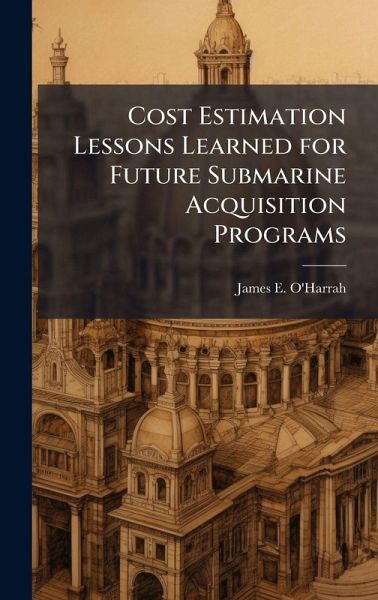
Cost Estimation Lessons Learned for Future Submarine Acquisition Programs
Versandkostenfrei!
Versandfertig in über 4 Wochen
25,99 €
inkl. MwSt.
Weitere Ausgaben:

PAYBACK Punkte
13 °P sammeln!
The passage and signing of the Weapons Systems Reform Act of 2009 indicated the concern of the President and Congress that Major Defense Acquisition Programs (MDAPs) continue to experience cost problems. One of the most significant cost issues is the Navy's $13 billion annual ship building budget. Indeed, the Government Accounting Office (GAO) reported it is not uncommon for estimates to be off by 20 to 50 percent of the acquisition cost and that the Navy exceeded the budget on a total of 41 ships for $4 billion. The Virginia class submarine program accounted for approximately $1 billion of th...
The passage and signing of the Weapons Systems Reform Act of 2009 indicated the concern of the President and Congress that Major Defense Acquisition Programs (MDAPs) continue to experience cost problems. One of the most significant cost issues is the Navy's $13 billion annual ship building budget. Indeed, the Government Accounting Office (GAO) reported it is not uncommon for estimates to be off by 20 to 50 percent of the acquisition cost and that the Navy exceeded the budget on a total of 41 ships for $4 billion. The Virginia class submarine program accounted for approximately $1 billion of this cost overrun on its first two hulls . Unplanned acquisition and operations cost growth impacts the Navy's ability to reconstitute and maintain the fleet as planned. A 2005 GAO report stated that 14 percent of the $52 billion allocated for shipbuilding went to pay for cost growth over the previous five year period. In addition, with the increasing federal deficit, continued war in Iraq and Afghanistan, and need for expansion of other government programs, the days of accounting for cost overruns with additional funding may be disappearing. This work has been selected by scholars as being culturally important, and is part of the knowledge base of civilization as we know it. This work was reproduced from the original artifact, and remains as true to the original work as possible. Therefore, you will see the original copyright references, library stamps (as most of these works have been housed in our most important libraries around the world), and other notations in the work. This work is in the public domain in the United States of America, and possibly other nations. Within the United States, you may freely copy and distribute this work, as no entity (individual or corporate) has a copyright on the body of the work. As a reproduction of a historical artifact, this work may contain missing or blurred pages, poor pictures, errant marks, etc. Scholars believe, and we concur, that this work is important enough to be preserved, reproduced, and made generally available to the public. We appreciate your support of the preservation process, and thank you for being an important part of keeping this knowledge alive and relevant.












